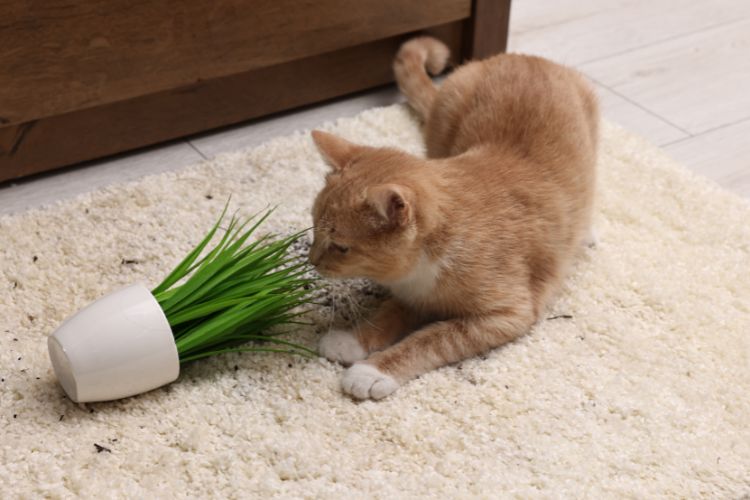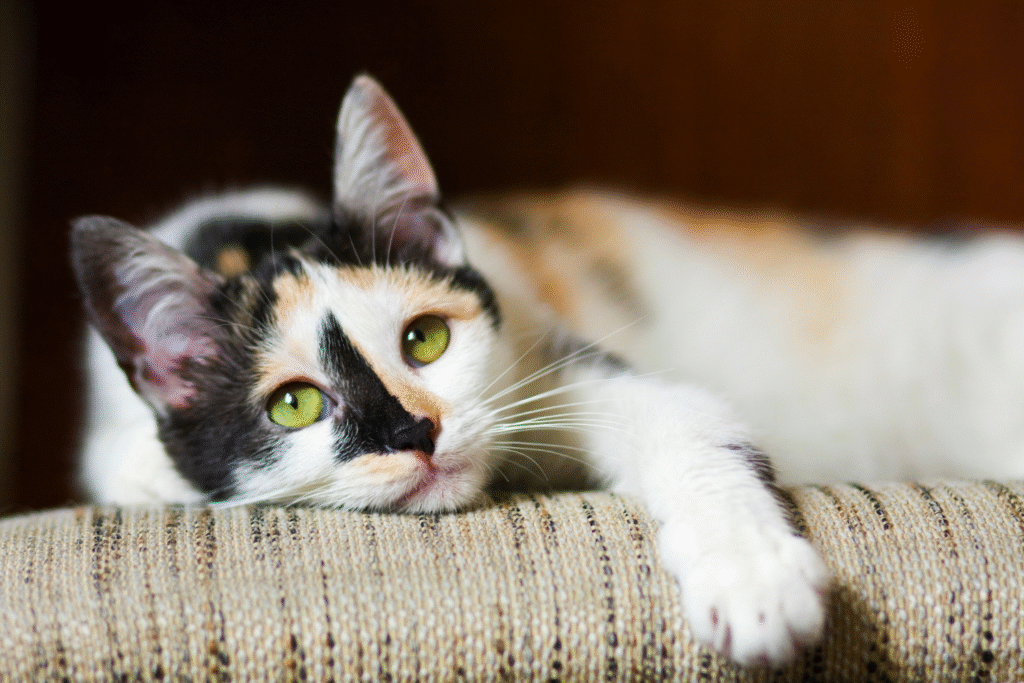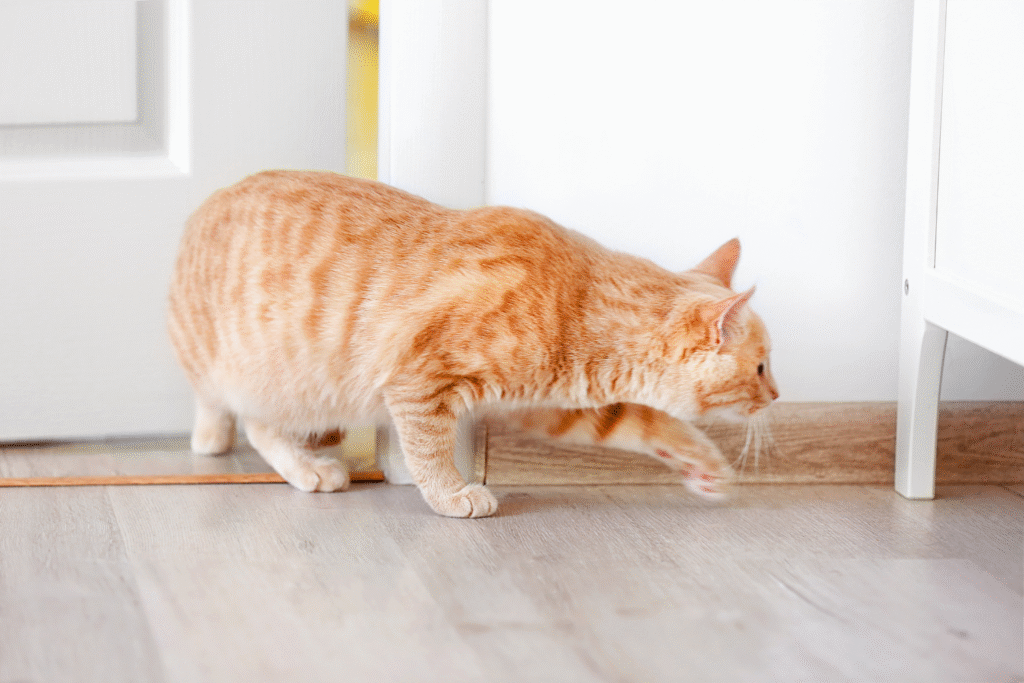Curious instincts reveal a clever feline behavior pattern.

If you share your home with a cat, chances are you’ve witnessed the sudden thud of something precious hitting the floor, followed by wide, unbothered eyes staring up at you. It looks deliberate, almost calculated, and in a way—it is. Cats aren’t just being playful troublemakers when they push objects off tables. Science shows this behavior is rooted in instinct, communication, and curiosity. Understanding it doesn’t just save your coffee mug; it opens a window into how cats think, feel, and interact with the world around them.
1. Instinctual hunting habits turn harmless objects into prey.

That casual paw tap on your pen isn’t random at all. It mirrors the precise motion a cat would use when testing or stunning small prey in the wild, as stated by PetMD. Household items mimic the unpredictable movement of prey, triggering this ancient reflex. The act satisfies a deep-seated need to stalk, test, and control, even in an indoor environment. When a cat bats your keys off the counter, it’s not malice—it’s millennia of evolution quietly at work beneath a layer of fur.
2. Attention becomes the reward after the crash.

When the object clatters to the floor and you react, your cat gets instant feedback. The sound, the movement, and your response all reinforce the action, as discovered by Cats.com. Cats are quick learners; if dropping your phone earns them eye contact, words, or laughter, it becomes a surefire way to connect with you. The more dramatic your reaction, the stronger the habit becomes, making your frustration part of the game without you realizing it.
3. Boredom often transforms into an impromptu science experiment.

A restless mind will find its own entertainment, and for cats, that might mean sending objects tumbling. According to Mental Floss, when play and stimulation are lacking, cats create scenarios that challenge their senses. A falling spoon makes sound, movement, and consequence—a full sensory event. By offering puzzle toys, climbing spaces, or interactive play, you can redirect that curiosity toward safer outlets that satisfy their need for stimulation.
4. Curiosity compels exploration of every unfamiliar surface.

A cat’s world is a tactile one, ruled by whiskers and paws. New textures, shapes, or smells demand to be investigated, and your table becomes their testing ground. The moment something new appears, it’s probed, nudged, and—sometimes—pushed. This isn’t defiance but discovery, the feline version of asking “What’s this?” in the only language they know. Objects are their tools for understanding a constantly changing environment.
5. Sudden household changes can trigger territorial reactions.

Move a plant, bring home a new lamp, or rearrange furniture, and your cat may respond by clearing surfaces. It’s a way of restoring balance in their territory, claiming space through interaction. The act can seem petty, but in truth it’s a coping mechanism—re-establishing control when the familiar feels uncertain. Once their confidence returns, the behavior often fades just as quickly as it appeared.
6. Stress relief sometimes looks like mischief in motion.

A cat under pressure—whether from noise, loneliness, or disruption—may express it through physical acts like knocking things down. It’s a release of pent-up energy or anxiety. The repetitive action and resulting noise can soothe them by giving a sense of control. Observing when this happens often reveals hidden stressors in their environment that you can help reduce.
7. Testing gravity is part of a feline’s curiosity circuit.

Every object becomes part of a personal experiment. Cats learn through cause and effect, and the instant a pencil rolls or a coin falls, it sparks a feedback loop in their brain. Some behaviorists even describe it as playful physics—cats discovering their impact on the world. Once they realize dropping something gets a result, they repeat it, not out of spite but fascination.
8. Human value systems mean nothing to a cat’s logic.

To a feline, your expensive glass and a spare button hold the same importance: both are objects within reach. They lack the concept of “fragile” or “sentimental.” Everything is fair game for testing, touching, or toppling. The key lies in management rather than correction—clearing vulnerable items and replacing them with cat-safe curiosities that satisfy their instinct to interact.
Each toppled trinket, though frustrating, is part of a larger story about how cats experience the world. What looks like chaos is, in truth, communication—a subtle blend of instinct, curiosity, and connection that keeps them endlessly fascinating companions.
